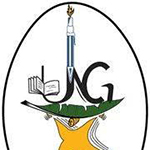Detailed introduction of the University of Burundi:
Basic Overview
Established in October 1964.
Institutional Nature: The only public comprehensive university in Burundi.
Campus Distribution: There are three campuses in Bujumbura, one in Gitega, and seven campuses across the country.
Number of Students and Faculty: There are about 20,000 undergraduate, master and doctoral students and more than 2,000 faculty and staff.
History: The history of the University of Burundi can be traced back to the early 1960s, when the Institute of Agronomy was established under the colonial rule of the Belgian Congo and Rwanda-Urundi. After Burundi's independence, the institution moved to Bujumbura and changed its name. Subsequently, under the promotion of the Jesuits, three specialized colleges were established and merged in 1964 to form the official University of Burundi. In 1977, the official University of Burundi merged with two other vocational training institutions and was officially named the University of Burundi.
Educational philosophy and school strength
Educational philosophy: Inheriting the teaching tradition of the University of the Capital of Belgium, following the traditional academic model of the Middle Ages in Europe, it is committed to cultivating elite talents and delivering professionals in various fields for the development of the country.
School strength: As the core institution of higher education in Burundi, it has rich teaching facilities and experienced faculty and staff. Its library and laboratory resources not only serve the teachers and students of the school, but also support the development of other newly established universities. It is also one of the leading higher education institutions in the region.
Discipline setting and key disciplines
Departments and colleges: There are multiple colleges and research institutes covering a wide range of research fields, such as agronomy, medicine, law, economics, education, etc.
Key disciplines: It has certain advantages in the fields of medicine, agronomy, law, etc., and has trained a large number of doctors, engineers, lawyers, economists and experts in natural sciences for Burundi.
International cooperation: Actively participate in the cooperation of many international and regional organizations, such as the East African University Council, the Regional University Forum, the Alliance of Universities of the French Community and the African and Maghreb Higher Education Commission, etc. Through cooperation and exchanges, the school's international influence and education level have been enhanced.
Campus Environment
Teaching Facilities: It has relatively complete teaching facilities, such as libraries and laboratories. The University of Burundi Library was built in 1981 and officially opened in 1985. As of 1993, the library had a collection of 150,000 books, making it one of the largest and most important libraries in Burundi.
Campus Atmosphere: As the highest institution of learning in Burundi, the campus has a strong academic atmosphere, and students come from different regions and backgrounds, forming a diversified campus culture.
-

Ngozi University
-

Light University of Bujumbura
-

University of Burundi
-

Lake Tanganyika University
-

Polytechnic university of Gitega
-

University De Mwaro
-

Mesoamerican University
-

Istmo University
-

Mariano Galvez University of Guatemala
-

Regional University of Guatemala
-

Galileo University
-

Francisco Marroquín University
-

Rafael Landívar University
-

University of the Valley of Guatemala
-

University of San Carlos of Guatemala
-

Technological Institute of Tlaxcala Plateau
-

Golfo University
-

Technological University of South Sonora
-

Technological University of Huejotzingo
-

Tizimín Institute of Technology
-

Chilpancingo Institute of Technology
